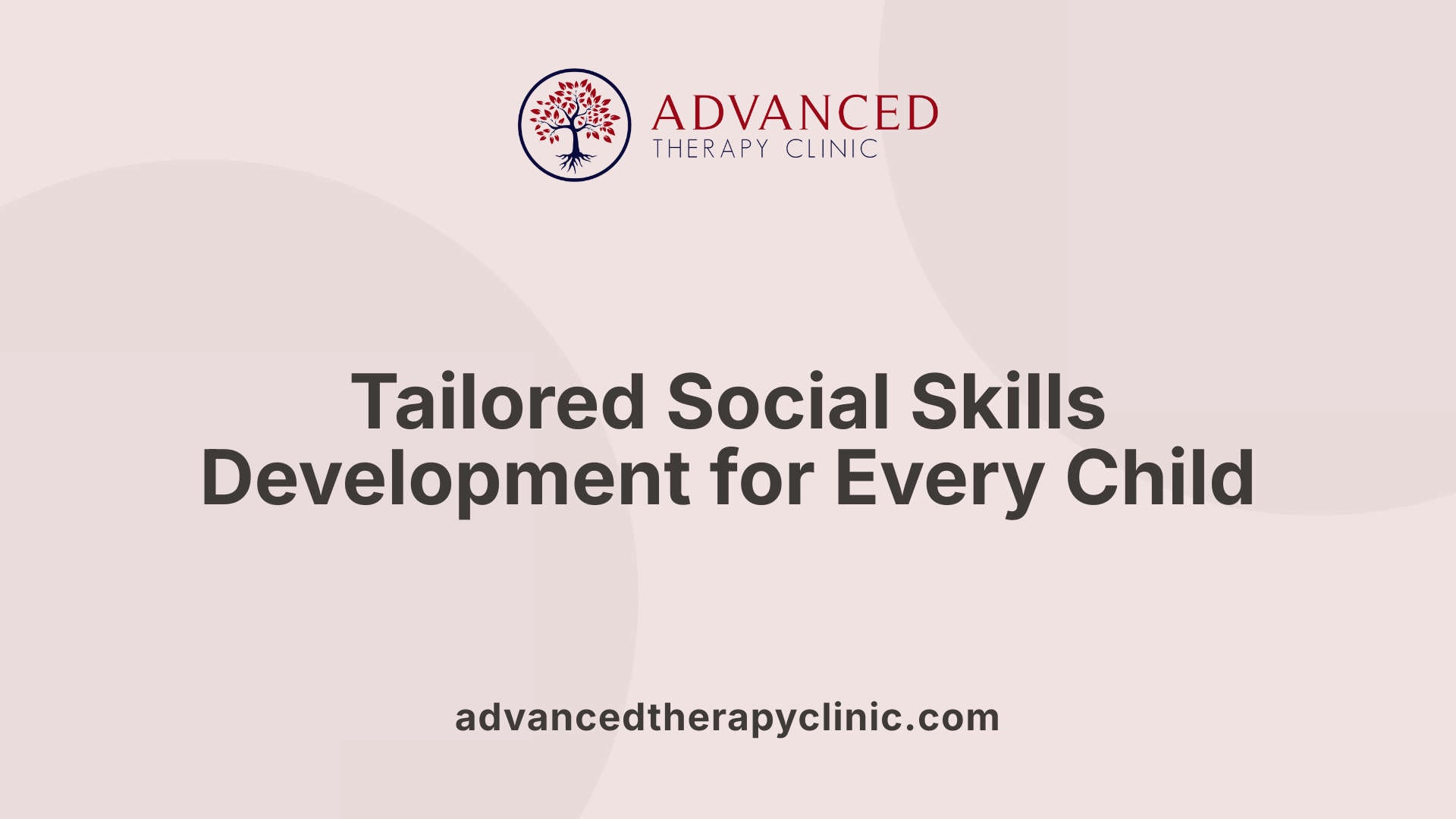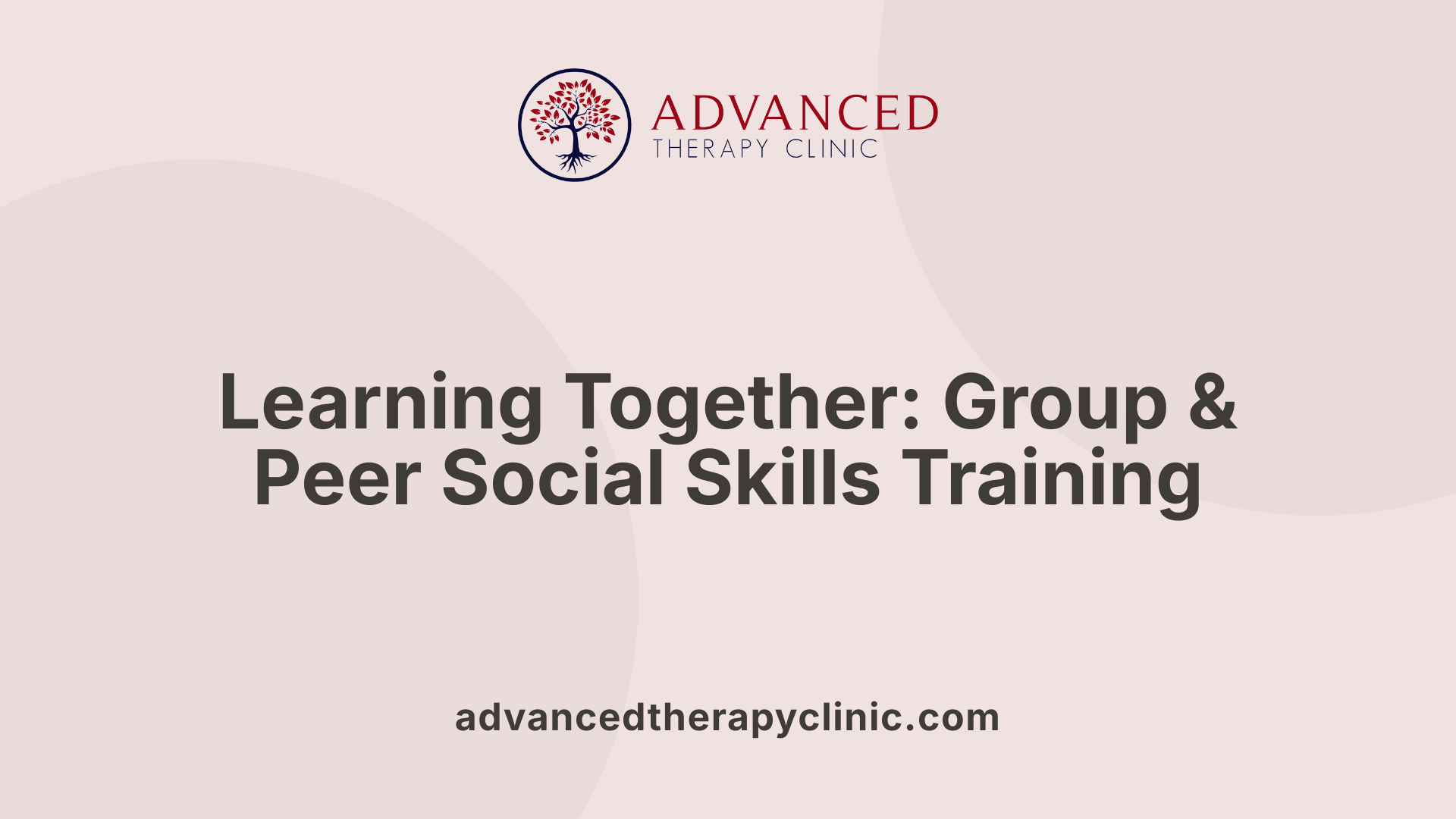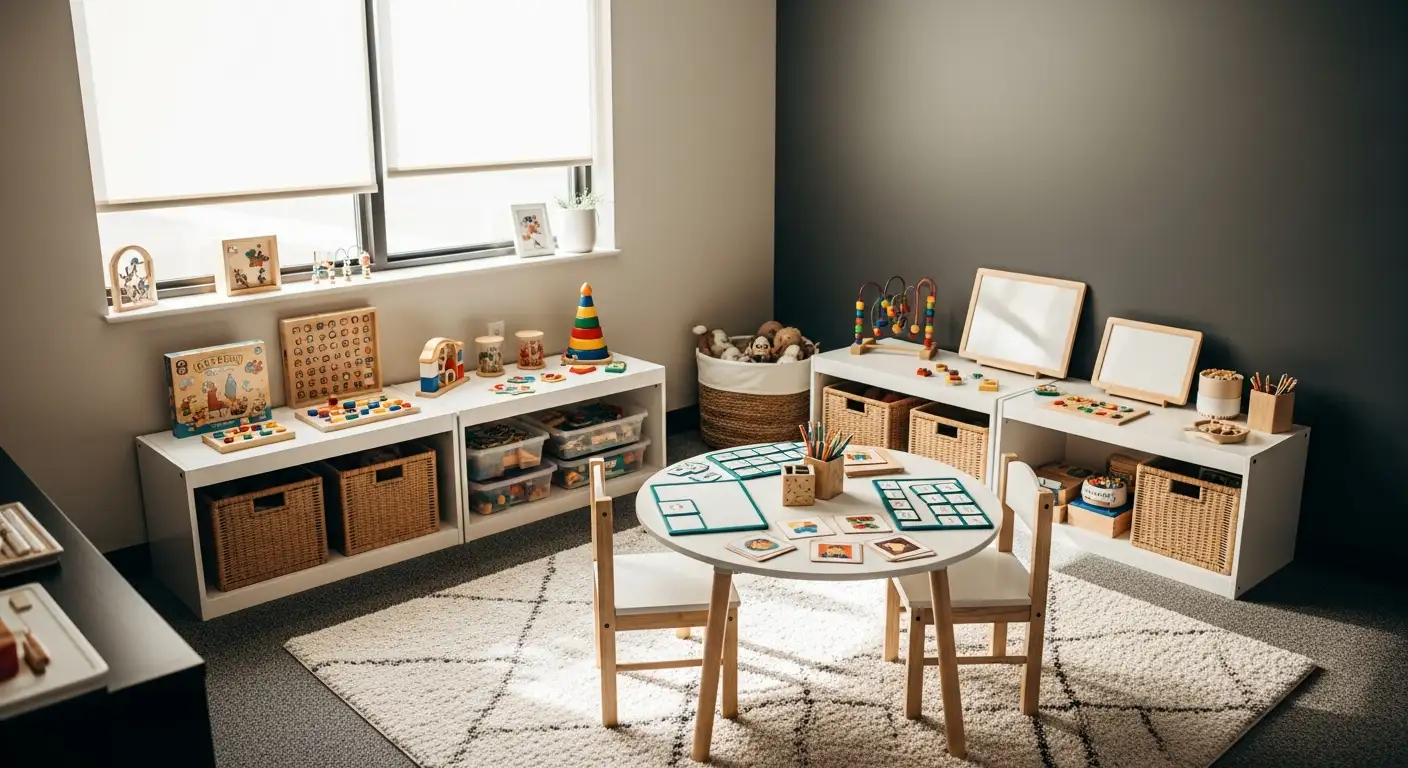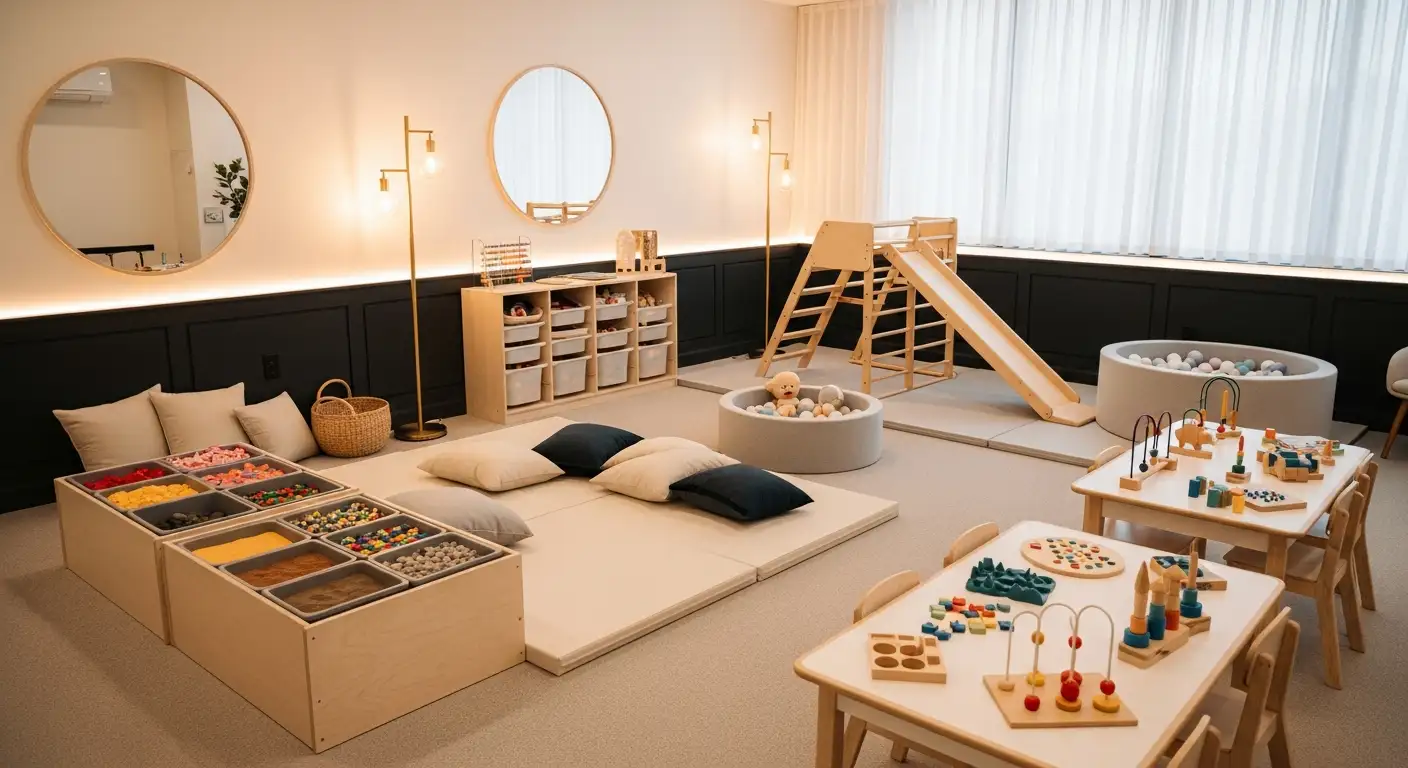How ABA Therapy Improves Social Skills in Children


Understanding How ABA Transforms Social Skills in Children with Autism
Applied Behavior Analysis (ABA) therapy is a scientifically backed approach that significantly enhances social skills in children on the autism spectrum. By employing tailored interventions grounded in behavioral science, ABA therapy helps children understand, practice, and generalize social behaviors essential for meaningful interactions and emotional well-being.
Personalized Assessments and Goal Setting in ABA

How does ABA therapy help children develop social skills?
ABA therapy plays a vital role in helping children improve their social abilities through carefully designed, evidence-based interventions. Central to this process are comprehensive assessments that evaluate each child's current social skills, strengths, and areas needing support.
Based on these assessments, therapists create individualized programs tailored to meet the unique needs of each child. These programs focus on specific social skills such as effective communication, maintaining eye contact, engaging in turn-taking, and understanding social cues like facial expressions and body language.
During therapy, a variety of strategies are employed, including modeling appropriate behaviors, role-playing social scenarios, and using visual aids or video demonstrations. These methods help children recognize social cues, practice responses, and develop confidence.
Family involvement is a crucial component, as it supports the reinforcement of targeted skills across different environments like home and school. Teachers and caregivers collaborate with therapists to ensure consistency and generalization of skills.
By focusing on personalized goals and systematic teaching, ABA therapy encourages children with autism to improve social interactions that are meaningful and functional. The overall aim is to foster greater independence, better communication, and more positive social relationships.
| Social Skill Area | Intervention Strategies | Goals Achieved | Additional Notes |
|---|---|---|---|
| Verbal communication | Role-playing, modeling, prompting | Talking with peers, initiating conversations | Using visual aids and scripted phrases |
| Non-verbal cues | Video modeling, social stories | Recognizing facial expressions, body language | Focus on eye contact and gestures |
| Turn-taking | Structured play, peer-mediated activities | Playing games, sharing toys, cooperating in tasks | Reinforces patience and social reciprocity |
| Emotional Understanding | Teaching emotions, social stories | Identifying feelings, responding appropriately | Supports empathy and emotional regulation |
This tailored approach helps children develop vital social skills systematically, supporting their overall growth and integration in social settings.
Structured Learning Environments and Techniques

Use of role-playing, social stories, structured play
In ABA therapy, practical activities like role-playing, social stories, and structured play are fundamental. Role-playing allows children to rehearse real-life social scenarios, such as greeting others or sharing toys, helping them recognize social cues and respond appropriately. Social stories are illustrated narratives that teach children about social norms and expectations in specific situations, easing anxiety and clarifying behaviors. Structured play involves planned activities designed to teach specific social skills, such as turn-taking or cooperation, within a controlled environment.
Minimizing stimuli to improve focus
Creating an environment with reduced sensory overload is vital for children to concentrate on learning new social skills. By limiting loud noises, bright lights, or busy surroundings, therapists help children stay focused during sessions. This controlled setting helps children process social cues more effectively and reduces overwhelming stimuli that could hinder progress.
Incorporation of visual aids and prompts
Visual supports like picture charts, cue cards, and timers are extensively used in ABA therapy. These aids serve as prompts to remind children of expected behaviors, such as making eye contact or waiting their turn. Visual cues help bridge language gaps and clarify social expectations, especially for children with difficulty understanding verbal instructions. Over time, therapists fade these supports as children learn to internalize the skills.
Strategies Used in ABA Therapy to Develop Social Skills
ABA therapy employs various methods tailored to each child's needs. Strategies include task analysis, where complex social behaviors are broken into small, manageable steps. Modeling demonstrates desired behaviors, while role-playing provides practice opportunities. Social stories teach social understanding, and peer-mediated interventions facilitate interaction with classmates. Reinforcement, like praise or rewards, encourages consistent practice of social behaviors, and natural environment training embeds these skills into everyday routines. Video modeling and prompting techniques further support non-verbal communication and emotional recognition. Regular data collection guides adjustments, ensuring skills are solidified and generalized across different settings.
The Role of Reinforcement and Modeling

How does positive reinforcement teach social skills?
Positive reinforcement is a cornerstone of ABA therapy, especially effective in teaching children social behaviors. Therapists often use praise, rewards, and social cues to encourage children to practice and repeat desirable social actions. For example, a child might receive a verbal compliment or a small token for making eye contact or sharing. These rewards motivate children to engage in behaviors like active listening, turn-taking, and respectful boundaries.
Using social cues such as high fives, smiles, or encouraging words further amplifies the effect, helping children understand what behaviors are appreciated and expected. Over time, these reinforced behaviors become natural responses, laying the groundwork for strong social interactions.
How modeling appropriate behaviors enhances learning
Modeling is a vital technique where therapists demonstrate specific social behaviors for the child to imitate. This could include initiating conversations, using polite language, or interpreting facial expressions. By observing these models, children learn how to respond in various social settings.
Therapists often combine modeling with prompting—guiding the child step-by-step—and then gradually fading support to foster independence. This helps children internalize social norms and develop confidence in their interactions.
Use of prompting and fading strategies
Prompting involves providing hints or cues to guide the child's behavior. For example, a therapist might prompt a child to make eye contact before giving a reward. As the child's skills improve, the prompts are gradually faded or reduced, encouraging independent use of the skills.
This systematic approach ensures that children master social behaviors gradually and confidently. Fading prompts helps embed these skills into everyday life, increasing the likelihood that children will use them across different settings and with various people.
Overall, reinforcement and modeling within ABA therapy are integral strategies that help children with autism develop essential social skills, fostering better communication, confidence, and relationships.
| Technique | Description | Example |
|---|---|---|
| Positive Reinforcement | Using rewards or praise to encourage behaviors | Giving a toy for sharing |
| Modeling | Demonstrating behaviors for imitation | Showing how to greet someone |
| Prompting | Providing cues to guide behavior | Telling a child to say "hello" |
| Fading | Gradually reducing prompts to foster independence | Slowly removing prompts as the child responds correctly |
Emphasizing tailored approaches, ABA therapy integrates these methods to transform social challenges into opportunities for growth, significantly improving children's ability to connect and communicate.
Peer-Mediated and Group-Based Social Skills Training

What is social skills training and how is it incorporated into ABA therapy?
Social skills training within ABA therapy involves teaching children and individuals with social deficits how to behave effectively and appropriately in social environments. These skills include communication, understanding social cues, and engaging in collaborative interactions.
ABA therapy uses a variety of structured techniques to develop these skills. Common methods include social stories, role-playing, video modeling, and social scripts. Visual supports and comic strip conversations are also employed to help children understand social scenarios.
This training is highly personalized, with strategies tailored to each child's age, needs, and strengths. Reinforcement plays a critical role; children are encouraged to practice new behaviors through praise, rewards, or social reinforcement like high fives.
Repetitive practice and rehearsal, along with modeling and prompting, help children generalize social skills across different settings. Parent and teacher involvement ensures these skills are maintained outside of therapy sessions, promoting real-world application.
This approach aims to enhance overall social competence, empathy, and confidence in children, helping them navigate social situations with greater ease.
Group interactions to practice social behaviors
Group social skills training provides children with opportunities to practice social interactions with peers. These group sessions foster skills such as teamwork, communication, and problem-solving.
Children learn turn-taking through interactive play, participate in group activities, and practice sharing and cooperation. These settings are structured but dynamic, helping children internalize social rules while enjoying the process.
Group-based interventions also assist children in recognizing social cues from peers, managing conflicts, and developing friendships. Observing peers’ social behavior offers valuable learning opportunities.
Building friendships and collaborative skills
Developing meaningful relationships is a fundamental goal of social skills training in ABA. Activities such as role-playing and peer-mediated interventions teach children how to introduce themselves, join group conversations, and share with others.
Through repeated practice, children learn the importance of respecting boundaries, listening actively, and responding appropriately during interactions. These skills foster trust and friendship-building.
Group settings help children develop collaboration skills like problem-solving, negotiating, and working toward shared goals, which are essential for maintaining relationships.
Natural environment training for real-world applicability
To ensure skills are useful outside therapy, ABA providers emphasize natural environment training (NET). This approach involves practicing social skills in everyday settings like home, school, or community areas.
Children learn to apply conversational techniques, interpret social cues, and engage in cooperative play during natural interactions. This training helps bridge the gap between structured therapy and real-world social challenges.
In summary, ABA-based social skills programs incorporate group activities, peer interactions, and natural environment training to create well-rounded, socially competent individuals capable of forming friendships and functioning confidently in diverse settings.
Teaching Non-Verbal Communication and Emotional Recognition
What does high-quality social skills look like in children undergoing ABA therapy?
Children receiving ABA therapy often develop several important social skills that contribute to positive social interactions. These include effective verbal and nonverbal communication, such as making eye contact, using gestures, and understanding facial expressions. Children learn turn-taking, sharing, and respecting personal boundaries, which helps them participate successfully in group activities. Empathy and emotional understanding are also focal points, enabling children to recognize and respond to others’ feelings appropriately. These skills are fundamental in building friendships, navigating social settings, and improving overall social engagement, making them essential goals in ABA interventions.
Understanding social cues like facial expressions and body language
A core component of ABA therapy involves teaching children to interpret social cues. Recognizing facial expressions, such as a smile indicating friendliness or a frown showing displeasure, helps children understand others' emotions. Body language, including gestures, posture, and eye contact, provides additional context in conversations and social interactions.
Therapists use visual aids, role-playing, and modeling to help children identify these cues. For example, children might practice matching facial expressions with emotions or observing peer behaviors to discern understanding and respond effectively.
Reading and using non-verbal cues in interactions
Children are taught to apply their understanding of non-verbal cues during real-life interactions. This can involve making eye contact when someone is speaking, using appropriate gestures to participate in a conversation, or recognizing when a peer is upset and responding with empathy.
Activities like social stories, video modeling, and natural environment training are often used to consolidate these skills. The goal is for children to naturally incorporate non-verbal signals into their interactions, fostering smoother communication and stronger relationships.
Recognizing and expressing emotions appropriately
An important focus in ABA is helping children identify various emotions in themselves and others. This can involve teaching children to label emotions, such as happy, sad, angry, or scared, through pictures, stories, or conversations.
Furthermore, children learn to express their own emotions in socially appropriate ways, using words or gestures instead of problematic behaviors. For example, teaching a child to say “I’m upset” instead of yelling or hitting. This emotional awareness supports better self-regulation and social understanding.
By systematically targeting these aspects, ABA therapy equips children with the skills to interpret social cues accurately, communicate their feelings effectively, and respond empathetically to others, paving the way for meaningful social relationships.
The Impact of ABA on Long-Term Social Development
ABA therapy significantly influences a child's social development over the long term. One of its primary benefits is the ability to promote the generalization of social skills across various settings. Through consistent training and collaboration with parents, teachers, and caregivers, children learn to apply social behaviors not only during therapy sessions but also in daily life, at school, and within the community.
Positive peer relationships and active participation in social activities are commonly enhanced through ABA interventions. Children are guided to improve their conversational skills, understand nonverbal cues, and develop empathy, which fosters friendships. Group social skills training provides structured opportunities where children practice interacting with peers, learning skills such as teamwork, cooperation, and conflict resolution.
Furthermore, ABA therapy helps increase confidence and social independence. As children master social behaviors like eye contact, turn-taking, and emotional recognition, they become more comfortable navigating social environments. This boost in self-assurance encourages more spontaneous social engagement, leading to a sense of achievement and independence.
Table 1 below summarizes some long-term outcomes of ABA social skills training:
| Outcome | Description | Supporting Strategies |
|---|---|---|
| Generalization of skills | Transfer of learned social behaviors across settings and routines | Family involvement, peer modeling, natural environment training |
| Improved peer relationships | Development of friendships and increased social participation | Group activities, role-play, reinforcement strategies |
| Increased confidence and independence | Children feel more capable and willing to engage socially | Personalized goals, success-based reinforcement |
Studies consistently show that ABA not only enhances immediate social skills but also fosters lifelong social engagement, confidence, and independence. This makes it an essential approach for supporting children with autism in achieving meaningful, sustained social development.
The Science Behind ABA and Its Effectiveness
Principles of learning and behavior underlying ABA
Applied Behavior Analysis (ABA) is built on the science of learning and behavior. It involves understanding how behaviors are influenced by environmental factors, such as antecedents and consequences. ABA systematically breaks down complex social behaviors into manageable steps and uses strategies like shaping, modeling, chaining, and prompting to facilitate learning.
ABA focuses on increasing helpful behaviors—like eye contact, sharing, and initiating conversations—while decreasing behaviors that hinder social development. Therapists record behaviors, analyze what triggers these actions, and modify the environment to promote positive social responses. This structured approach helps children interpret social cues effectively, respond appropriately, and develop essential communication skills.
Supporting evidence from research studies
Numerous research studies affirm that ABA is an effective, evidence-based intervention for children with autism. These studies demonstrate significant improvements in social skills, language, and daily functioning. For instance, children undergoing ABA therapy often show increased verbal and non-verbal communication, better emotional understanding, and enhanced social interaction capabilities.
ABA’s validity is supported by decades of scientific research, which confirms its capacity to produce consistent behavioral improvements. Techniques like social stories, video modeling, and peer-mediated interventions have proven successful in teaching social skills such as turn-taking, conflict resolution, and recognizing social cues.
Effectiveness across different ages and settings
ABA’s effectiveness is not limited to early childhood; it benefits individuals across all ages, including adolescence and adulthood. It can be tailored to suit different settings—home, school, community—ensuring skills are generalized beyond the therapy environment. Collaborations with parents, teachers, and caregivers help reinforce learned behaviors across various contexts.
In structured learning environments, ABA employs activities such as role-playing, social stories, and group sessions to foster social skill development. These approaches help children engage in reciprocal conversations, interpret facial expressions and body language, and participate in group activities. Overall, ABA provides a flexible, scientifically supported framework that caters to the unique needs of each individual, promoting lifelong social competence.
Empowering Children for Social Success
ABA therapy, grounded in scientific principles, offers a comprehensive and effective route to improving social skills for children with autism. Through individualized goals, structured teaching methods, reinforcement, and collaboration with families and peers, ABA promotes social competence, emotional understanding, and meaningful engagement. The long-term benefits of this approach extend beyond childhood, equipping children with essential skills that foster lasting friendships, social inclusion, and an improved quality of life.
References
- Developing Social Skills Through ABA Therapy for Autism
- Applied Behavior Analysis (ABA) | Autism Speaks
- How ABA Therapy Helps Improve Social Skills in Children
- Enhancing Social Skills Through ABA Therapy
- How ABA Therapy Helps With Social Skills
- How ABA Therapy Improves Social Skills in Children With Autism
- How ABA Therapy Helps with Social Skills - PediaPlex
- The Importance of Social Skills Therapy in Autism
- How ABA Therapy Enhances Social Skills in Children with ASD
Recent articles

Expressive Speech Delay 2-Year-Old
Understanding and Addressing Expressive Speech Delay in Toddlers

How Speech Recognition Works
Unlocking the Power of Speech Recognition in Therapy and Healthcare

Autism and Head Size
Understanding the Complex Relationship Between Autism and Head Size

Occupational Therapy in Autism
Enhancing Independence and Quality of Life Through Occupational Therapy in Autism

Do Autistic People Understand Sarcasm?
Navigating the Nuances: Understanding Sarcasm and Social Communication in Autism

Autism Routines
Crafting Effective Daily Structures for Children with Autism

